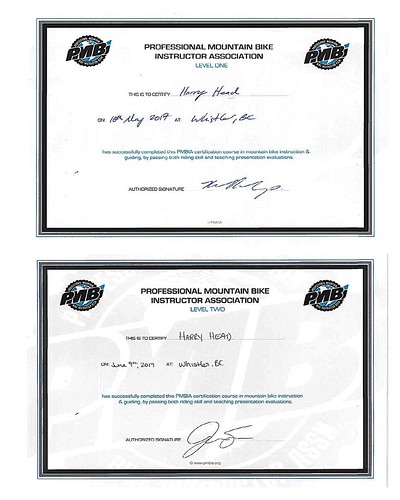on pMIG and was generated by cloning a DNA fragment encoding YPYDVPDYA 5′ of the Cnn3 cDNA. Retroviral transduction was performed as described. In short, the 293T cell-derived packaging line Phoenix was transfected using GeneJuice according to the manufacturers instructions. For infection, retroviral supernatants were mixed with polybrene, added to the pre-B cells and centrifuged at 1800 rpm at 37C for 3 hrs. In vitro assays For the immunoprecipitation, 2 x 107 transduced Dec pre-B cells per sample were left untreated or were pre-incubated with 1,5 M Syk inhibitor R406 for 30 min at 3 / 16 Calponin-3 in B Lymphocyte Development 37C. Pre-incubated cells were then left untreated or stimulated with 5 l/ml pervanadate/ H2O2 for 3 min at 37C. Cell pellets were lysed in ice-cold lysis buffer. HA-tagged proteins were precipitated using antiHA antibodies and protein-G Sepharose beads. Purified samples were washed, mixed with reducing sample buffer, boiled for 10 min and subjected to SDS-PAGE and western blot analysis. For normal visualization of proteins, about 12 x 106 cells per sample were directly lysed and used for analysis. Blotted proteins were detected by anti-calponin 2, anti-calponin-3, anti-actin, anti-GFP, antiphosphotyrosine and anti-eIF4alpha antibodies, followed by incubation with HRP-coupled species-specific secondary antibodies and visualization using the ECL system. Mice Mb1-cre mice and floxed Cnn2 mice have been described. To generate mice with the floxed calponin-3-GFP mini gene knocked into the endogenous Cnn3 locus, 129Sv-derived W4 embryonic PubMed ID:http://www.ncbi.nlm.nih.gov/pubmed/19698015 stem cells were electroporated with 25 g of the linearized targeting vector. ES cells that had integrated the vector were selected with G418 and screened for homologous recombination by Southern blot analysis. In detail, genomic DNA was digested with BamHI and hybridized with a 3′ external probe. Positive clones showing the expected band pattern were further verified by PCR as well as by additional digestions and Southern blot analysis with a 5′ internal and the 3′ external probe, respectively. The correctly targeted ES cell clone was injected into blastocysts and gave rise to  chimeric mice which were crossed with CMV-FLPe mice for excision of the neomycin selection cassette. Offspring was screened by PCR analysis and crossed with CMV-Cre for deletion of Cnn3 in PubMed ID:http://www.ncbi.nlm.nih.gov/pubmed/19696148 all tissues. For calponin-3-GFP expression analyses and for B cell-specific Cnn3 deletion, Cnn3 ki f/f mice were backcrossed with C57BL/6 mice for at least 5 generations. In all experiments shown, littermates were compared. Mice were bred at the animal facility of the Roscovitine Max-Planck-Institute of Immunobiology and Epigenetics. Animal studies were carried out in accordance with the German Animal Welfare Act after having been reviewed and approved as project Re-iTO-5 by the institutional animal welfare commission and the local Regional Commission. Flow cytometry Single-cell suspensions were prepared from different organs or from transduced cells and stained for FACS analysis using anti-IgM, anti-IgD and anti-B220, anti-CD4, anti-CD8, anti-CD3, anti-CD43, anti-CD44, anti-CD19 and anti-CD21, anti-CD25 and streptavidin-APC as well as streptavidin-Cy5/ PerCP. Data were accquired on a FACSCalibur, LSRII or CyAn ADP Analyzer and analyzed with FlowJo software. For measurement of calcium release upon stimulation, about 12 x 106 cells derived from the bone marrow or the spleen were incubated with 5 g/ml of Indo-1 AM and 0.5 g/ml of pluronic F
chimeric mice which were crossed with CMV-FLPe mice for excision of the neomycin selection cassette. Offspring was screened by PCR analysis and crossed with CMV-Cre for deletion of Cnn3 in PubMed ID:http://www.ncbi.nlm.nih.gov/pubmed/19696148 all tissues. For calponin-3-GFP expression analyses and for B cell-specific Cnn3 deletion, Cnn3 ki f/f mice were backcrossed with C57BL/6 mice for at least 5 generations. In all experiments shown, littermates were compared. Mice were bred at the animal facility of the Roscovitine Max-Planck-Institute of Immunobiology and Epigenetics. Animal studies were carried out in accordance with the German Animal Welfare Act after having been reviewed and approved as project Re-iTO-5 by the institutional animal welfare commission and the local Regional Commission. Flow cytometry Single-cell suspensions were prepared from different organs or from transduced cells and stained for FACS analysis using anti-IgM, anti-IgD and anti-B220, anti-CD4, anti-CD8, anti-CD3, anti-CD43, anti-CD44, anti-CD19 and anti-CD21, anti-CD25 and streptavidin-APC as well as streptavidin-Cy5/ PerCP. Data were accquired on a FACSCalibur, LSRII or CyAn ADP Analyzer and analyzed with FlowJo software. For measurement of calcium release upon stimulation, about 12 x 106 cells derived from the bone marrow or the spleen were incubated with 5 g/ml of Indo-1 AM and 0.5 g/ml of pluronic F